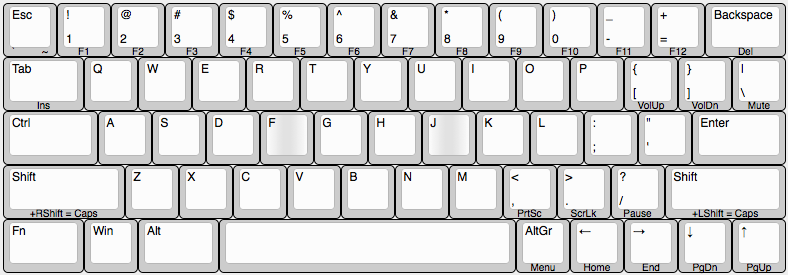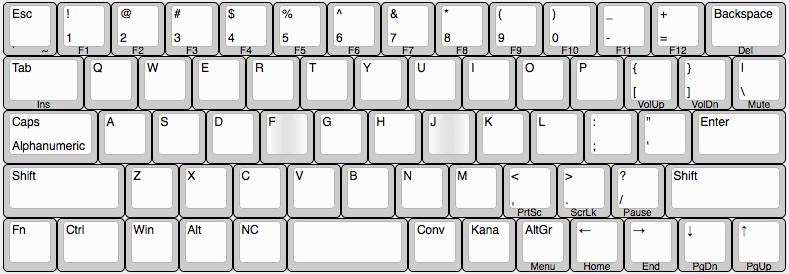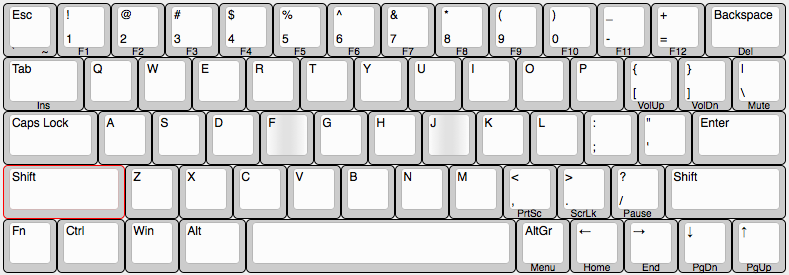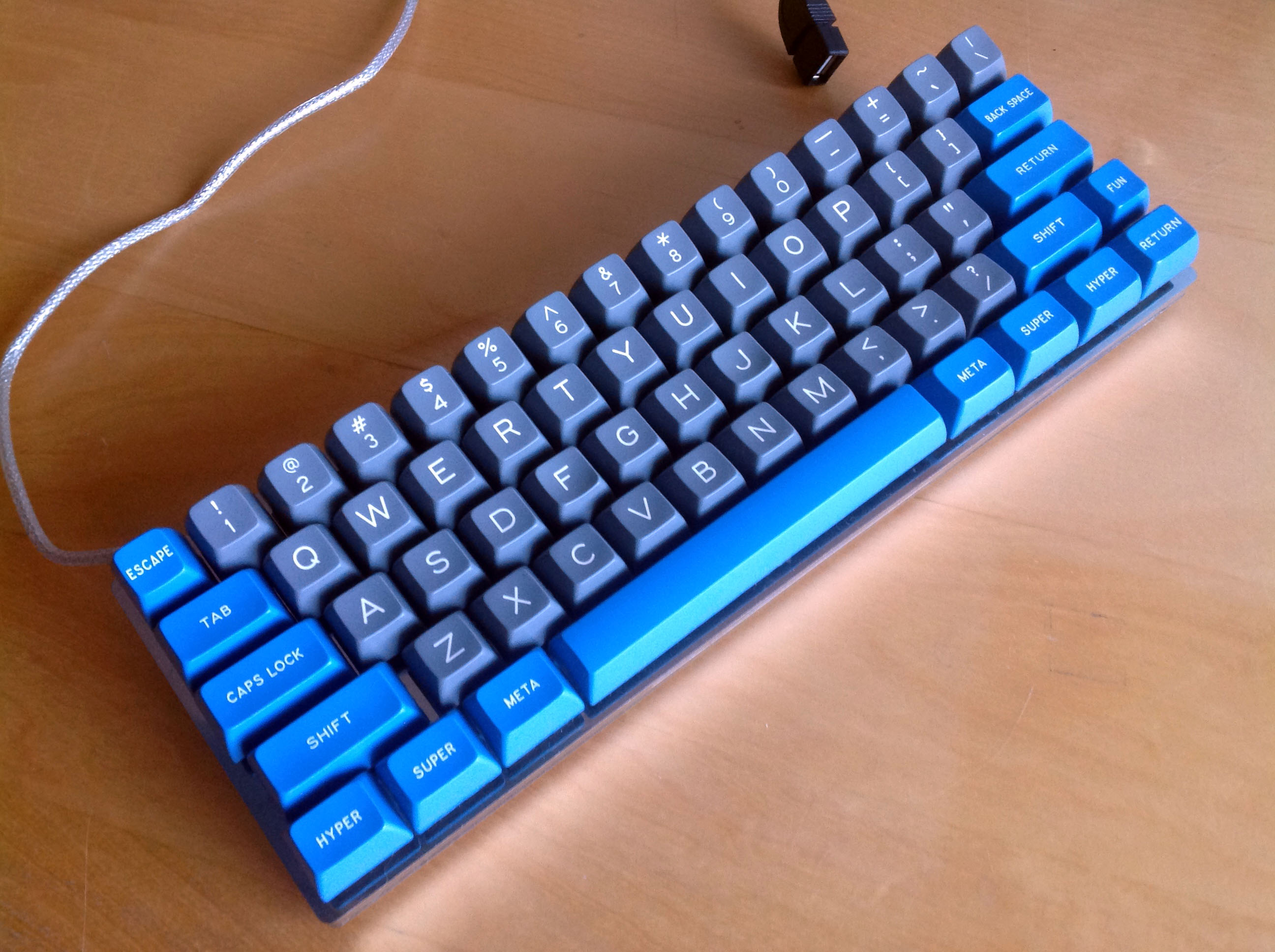Goal here is to make a 60% that's nice to type on, while being as compact in every dimension as possible. The typing area for a 14.5 x 5 U layout will be 261 mm wide, 90 mm tall. Compare to a 19 mm pitch keyboard with a similar layout (such as Apple's early ANSI-layout keyboards), at 275.5 x 95 mm, or a standard 19 mm pitch 60% at 285 x 95 mm.
Matias switches are planned. Cherry actually won't even work in this application, AFAIK. Not that I'd use Cherry anyway.

This is the current state of the layout. ISO enter is not practical, but ISO can be done by truncating left shift. JIS will be... less practical, but still doable - not with Bluetooth, though, as I'm thinking a lot of stuff can go under the spacebar on ANSI and ISO, that there won't be room for with JIS.
The mods are the way they are to reduce the number of tools required.
Keycaps needed:
51x 1 U
2x 1 U with either homing bump or deep dish (may make that 3x, and remove one from the standards, for an arrow key, like Apple used to do)
4x 1.5 U (BkSp, Tab, Fn, Alt)
2x 1.75 U (Ctrl, Enter)
2x 2.25 U (both Shifts)
1x 5.5 U convex (space)
The state of injection molding is such that it may actually be practical to do the injection molding for ABS single-shots (no legends for the prototype(s)) myself.
For minimum thickness, a 2-layer PCB will be needed, due to top-mounting the microcontroller. However, if the microcontroller is sufficiently thin, bottom-mounting may make sense.
If the switches are rotated, so the long dimension is vertical, not horizontal, there's about 9.7 mm width between the switches for =/+ and Backspace, enough room to slip a USB Micro-B connector in. TE's got one that's 7.5 mm wide (at least where it counts, the flange is wider, but at the flange, it can be as wide as it wants to be), although that is upside down as far as USB compliance is considered. Whoop de doo.


